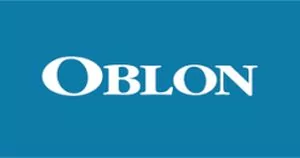- with readers working within the Media & Information industries
In the appeal of USSN 17/963,407 (Appeal 2025-001881) to the Patent Trial and Appeal Board (PTAB), a finding of obviousness by Primary Examiner Drew Becker, supported by Supervisory Patent Examiner (SPE) Erik Kashnikow and Review Quality Assurance Specialist (RQAS) Jennifer McNeil from the Office of Patent Quality Assurance (OPQA), was reversed by the PTAB for the improper reliance on hindsight. The decision can be found at https://patentcenter.uspto.gov/applications/17963407/ifw/docs?application=.
The application in question was filed by with three independent claims, covering a method, an apparatus, and a composition of matter, of which the elected method claim recited
[a] method for producing a raw comminuted meat product, the
method including:
(a) receiving a stream of input material including pieces of
meat;
(b) separating a first material and a second material from the
stream of input material so that the first material and second
material are separate from each other, the first material including
liquified meat fat and the second material including raw lean
meat;
(c) forming meat fat granules from a portion of the first material;
and
(d) combining a quantity of the meat fat granules at a meat fat
blending temperature with a quantity of the second material at a
lean meat blending temperature to produce a target comminuted meat
product having a target lean point.
The application described a problem sought to be solved as including accurately measuring fat content in raw meat.
The above claim was rejected as obvious over a combination of three references, based on the examiner's general assertion that the primary reference describes steps (c) and (d), but not steps (a) and (b) as recited in the base claim and some features in the dependent claims. The examiner relied on a secondary and tertiary reference for these features.
The applicant did not amend the base claim in response, and argued that the primary reference described adding cryogenically produced fat particles with other ingredients to obtain a food product, but does not describe adding the fat particles to raw, i.e., undenatured meat. The applicant argued that the primary reference refers to improved "mouthfeel" and "firmer texture," suggesting that the product is a cooked product rather than an uncooked product. The applicant also noted that the tertiary reference required a solid separation, rather than a liquid as claimed, and that its fat stream was not 100% fat. The applicant argued that even if one were to use the process described in the secondary reference to produce the liquid fat, there was no indication for then adding some of that (liquid) fat back to the remaining lean material, and that the tertiary reference only described recombining solids.
The examiner then again rejected the claims on essentially the same basis, whereafter the applicant modified the recitation in step (b) to recite that the liquefied meat fat was "substantially free of lean mean." The examiner allowed entry of the amendment under the now-expired After Final Consideration Pilot (AFCP) 2.0 program, but continued to reject claim 1 based on the examiner's opinion that the primary reference described using liquefied fat to make fat granules, but simply did not mention if any lean meat was present in the fat. The examiner felt that, using the primary reference, one would not have wanted other materials to contaminate or dilute the liquefied fat, and therefore it would have been desirable to keep a liquefied fat with as little lean meat as possible.
The applicant appealed the first final rejection was in error because the combination of references failed to show "separating a first material including liquified meat fat having a lean meat content no more than approximately 1% [i.e., 'substantially free of lean mean']," because the tertiary reference required the fat to remain solid for separation, and because the examiner's argument, i.e., that purifying the liquefied fat was desirable for purity's sake or that including the fat portion with little lean mean or other non-fat material would have ensured liquefied fat did not clog a spray drier in the primary reference, were made up and without support in the evidentiary record. The applicant pointed out that lean meat should not have been considered an undesirable impurity to be removed and that there was no basis to believe that there was a risk of clogging outside of < 1% lean meat in a fat stream. The applicant also pointed out that the combination would not necessarily lead to the claimed liquefied fat purity content.
The examiner reopened prosecution rejecting certain features in the claims as indefinite (e.g., the term "approximately") and over new combinations of at least four references. The examiner acknowledged that the new primary reference again failed to show steps (a) and (b), but argued that the new secondary reference showed separating protein from fat, then separating liquid fat from the raw fat fraction, bolstered by a new tertiary reference showing separating from a raw meat stream a proteinaceous fraction, an aqueous stream, and a lipidaceous fraction with 98 to 100% fat. The examiner included a quaternary reference describing the blending of meat fractions of differing fat content to reach a desired fat content, arguing that a method as claimed would be obvious because it would have been easier to operate and would have provided a convenient means for holding the separate portions.
The applicant did not amend claim 1, and argued that there would have been no apparent reason to combine features from the art and particularly separate out a liquefied meat fat stream (<1%) as claimed. The applicant posited
why would one of ordinary skill in the art acting at the effective date of this application, go through the trouble of separating out liquified meat fat at the specified purity from the lean fraction in the input material, just to form meat fat granules from that separated liquified meat fat and add those meat fat granules back to the separated lean fraction. There was no answer to this question apparent from the previously cited prior art and there is no answer to this question apparent from the currently cited prior art.
The applicant agreed that step (a) was known and that combining meats of different relative fat contents were known, but not the particular fat content of the liquefied fat and forming fat granules from the separated liquefied fat, then combining with comminuted meat to achieve a target fat content. The indefiniteness rejection for the term "approximately" was successfully traversed by pointing to general description of numerical values varying and being rounded in industrial practice. However, the claims were again rejected non-finally as obvious, and similar arguments were submitted on the failure of the art to provide a concrete basis to practice the particular features in the claims.
In response to a second final rejection disputing the applicants concretely articulated arguments, the examiner included the common "throw-away" mantra from the MPEP § 2145(IV) that "one cannot show nonobviousness by attacking references individually where the rejections are based on combinations of references," citing to In re Keller, 642 F.2d 413 (CCPA 1981); In re Merck & Co., 800 F.2d 1091 (Fed. Cir. 1986).
The applicant/appellant detailed the refutation of every reference based on the purpose of each reference and the lack of a specific indication of modifying as claimed in the primary reference—notably, this lack of a motivation in a primary reference is common in most USPTO rejections, because the motivation must not be specifically present in the primary reference—and explaining the purpose and peculiarity of the claimed method. The applicant/appellant explained that (emphasis added)
... the manner in which meat fat is found in pieces of meat that may be used to form a comminuted meat product made it difficult to accurately produce a target lean point (lean to fat ratio) in a comminuted meat product. Thus the fundamental problem addressed by the present invention is how to accurately produce a target lean point in a comminuted meat product.
Given that a goal of the present invention is to produce a comminuted meat product at a desired lean point, the solution set out in claim 1 may seem at first somewhat counter intuitive. That is, it may seem counter intuitive to first separate liquified meat fat and raw lean meat from the input meat pieces only to form meat fat granules from that separated meat fat and add it back to the separated raw lean meat to produce the target lean point. Why would one go through the trouble of separating out liquified meat fat having no more than 1% lean content (the "first material" set out in Appellant's claim 1) and raw lean meat (the "second material" set out in claim 1) from the input meat pieces if the separated liquified fat is later used to form fat granules that are added back to the raw lean meat to produce the target lean point?
The prior art references of record in the present application... suggest no answer to this question. The answer to the question is only apparent from the present disclosure ... at paragraphs 0014-0016, by separating outliquified meat fat and the lean component from the input meat pieces, variations in the fat/lean content of the input meat pieces, both variations within individual input meat pieces and variations from one input meat piece to the next, become essentially irrelevant to the lean point of the final product.
The applicant/appellant ultimately noted that the claims did not merely require separating fat from meat pieces, but separating a particular state and percentage of fat, forming granules of the separated fat, and combining the granules with the lean meat.
The examiner again countered the appeal brief arguments with the same general rationales behind purifying and achieving well-known goals in the art, i.e., reaching particular fat contents of comminuted meat, and the "overlapping range" arguments commonly used at the USPTO.
The PTAB, composed of the panel of Terry J. Owens (drafting), Michael P. Colaianni, and N. Whitney Wilson, disputed the examining corps' showing that the separating features relied upon in the secondary and tertiary prior art were common in the art. Further, the PTAB found that the examiner failed to show that these references "would have suggested, to one of ordinary skill in the art, providing 100% fat first material and nearly 100% lean second material to enable greater control and flexibility over the fat content of a final meat product" (viz., claim 1: "the first material including liquified meat fat and the second material including raw lean meat"). The PTAB criticized that the examining corps never explained how the prior art would have provided an "apparent reason to mix lean meat with liquified meat fat that is substantially free of lean meat to produce a comminuted meat product having a target lean point as required by Appellant's independent claim." The PTAB thus considered the examining corps' finding to be based on impermissible hindsight.
It is rare that "impermissible hindsight" is a successful argument at the USPTO. Here, however, the particular recitation of (1) the <1% lean in the liquefied meat fat stream; (2) forming meat fat granules therefrom; and (3) combining the granules with lean meat to reach the target fat content, were specific enough that one could have questioned whether separating a liquid fat, and such a liquid in the particular maximum lean content, was necessary and "taught" by the art (common) or particularly useful in the primary reference, whether forming granules in a separate context was common or necessary to a process in the primary reference, and particularly combining those granules with the leans in the primary reference was sufficiently common. In this case, the number of possibilities was too large for the PTAB to accept as obvious at the USPTO.
The content of this article is intended to provide a general guide to the subject matter. Specialist advice should be sought about your specific circumstances.


